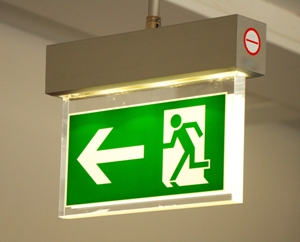New emergency advice for people with disabilities
Published: 19 July 2013
The University’s Safety and Environmental Protection Services team are highlighting a major overhaul of the arrangements for helping people with disabilities to be able to leave our buildings quickly and safely in emergencies.
The University’s Safety and Environmental Protection Services team are highlighting a major overhaul of the arrangements for helping people with disabilities to be able to leave our buildings quickly and safely in emergencies.
This is in line with the latest legislation and the University’s own policies. Safety and Environmental Protection Services say they anticipate that most people, including those with restricted mobility, will be able to exit ground floor areas by means of existing accessible entrances and exits. Where this is not the case, or where there’s a long way to travel to reach safety, the University is examining the feasibility of providing additional exits or refuge areas.
The refuge areas are beginning to be identified in many of the Universities buildings. These are intended as areas suitable for disabled people to shelter temporarily on upper floors while they await assistance. These areas, typically stair landings, are marked as fire refuges. In the event of a fire alarm or other circumstance that prevents exit by lift, those with a disability that prevents them leaving the building unaided should proceed to the closest Refuge Area.
Two-way communications systems are installed in some Refuge Areas to allow users to communicate directly with Central Services staff. There’s a rolling programme to provide more two-way communication links. Where there are no ‘phone links at the moment, people are advised to use mobile ‘phones to contact Central Services. Anyone who requires assisted evacuation is advised to carry a charged mobile phone and to ensure that the emergency number below is programmed into the phone memory.
Fire Wardens and other staff provide a further route for emergency communications.
Emergency Number: 0141 330 4444
You can read the full guidance notes here:
http://www.gla.ac.uk/services/seps/a-z%20index/firesafety/assistedevacuation/#d.en.279378
First published: 19 July 2013
<< July

